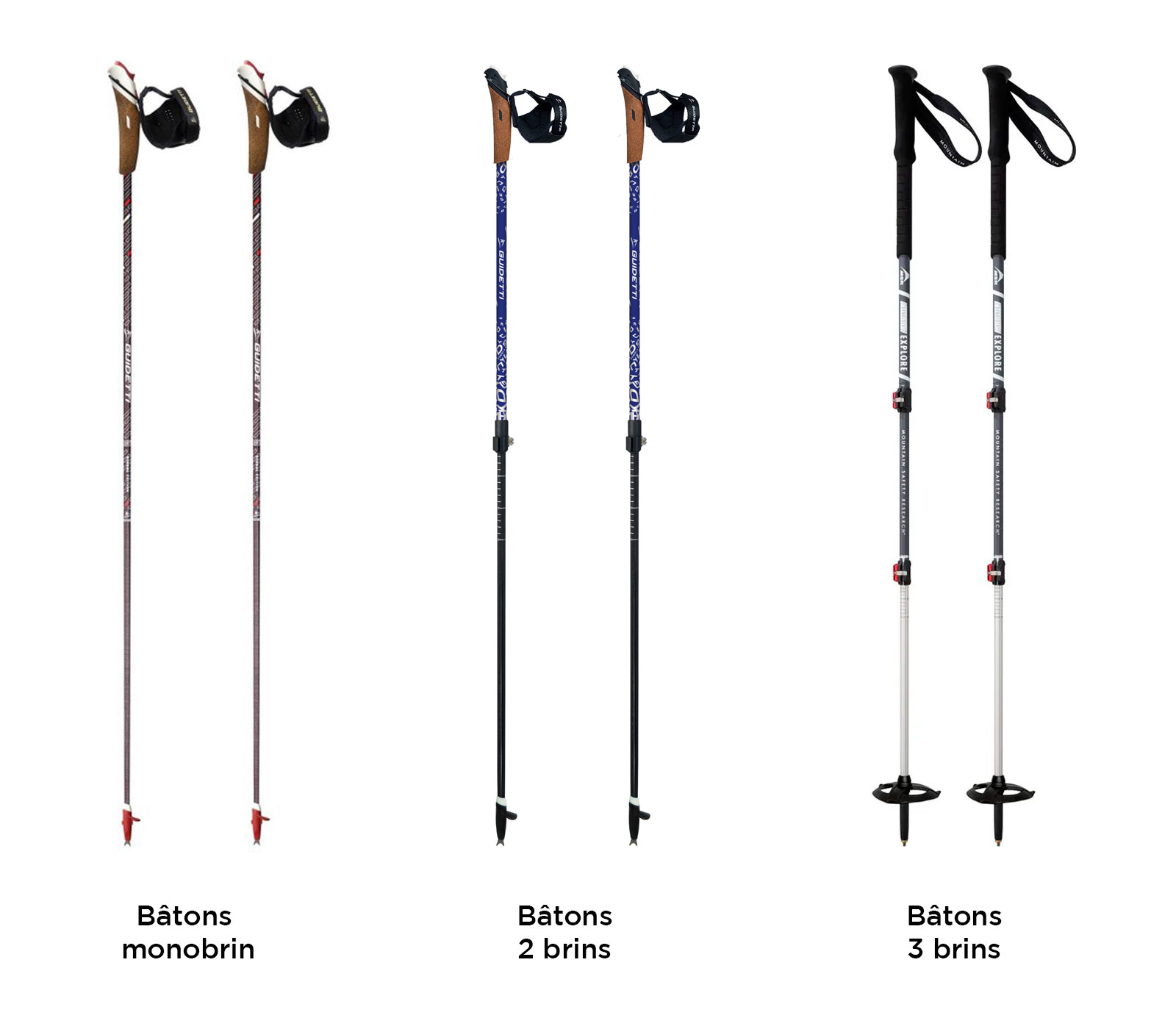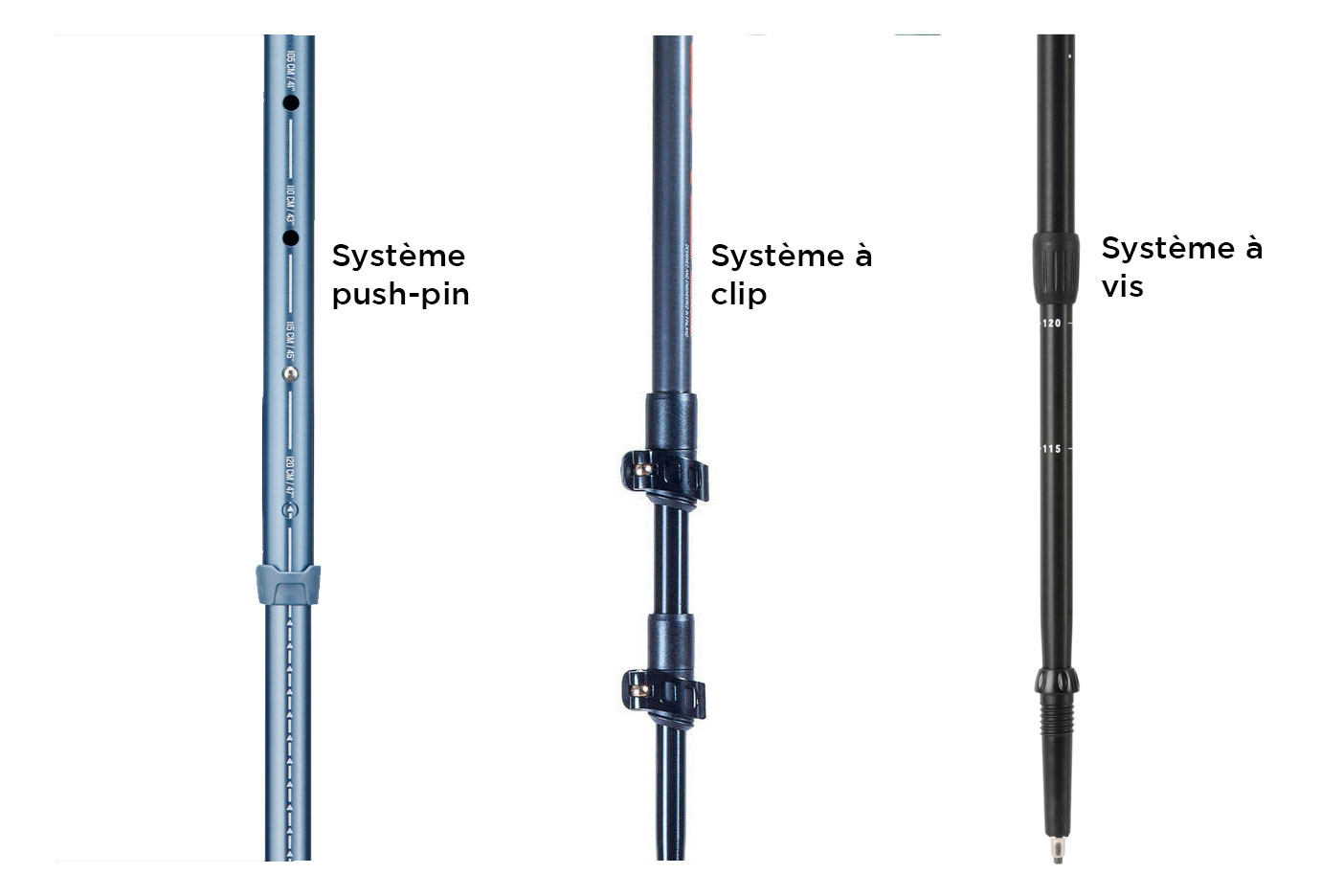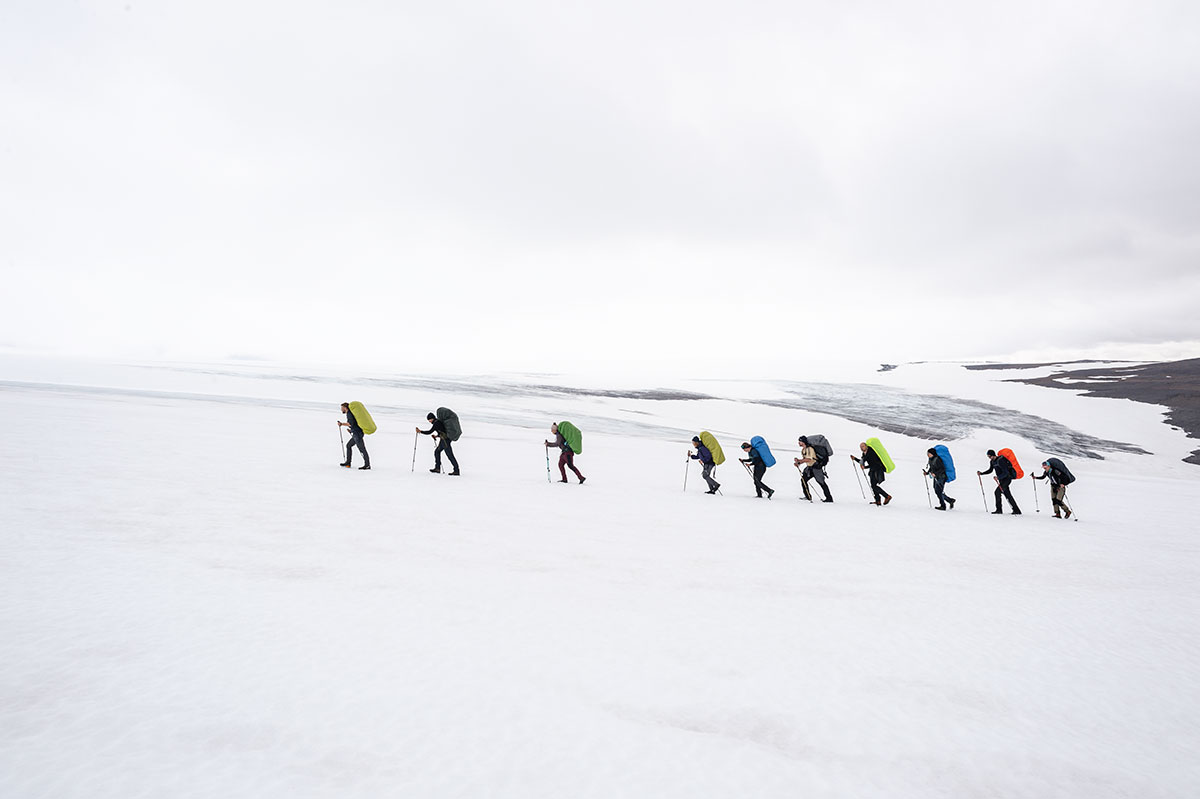8 tips to choose the best walking poles
For a long time, I walked without poles. But a meeting with a mountain rescuer opened my eyes to this accessory often considered useless. Since then, whenever I’ve got a rucksack on my back, I never leave without my poles, and it’s really changed everything for me. I walk longer, faster, and above all, I take care of my body. Before I give you some advice on how to choose the best walking poles, I’d like to talk about their usefulness.
The benefits of walking poles
I’m a hiking guide in Iceland, as well as a wildlife photographer. So I’m often out in nature, doing very physical activities. When I guide groups in Iceland, I refuse to accept anyone without walking poles. I can’t guarantee the safety of someone doing a 12-day self-sufficient trek without poles.
This advice is based on my own experience. I invite you to try them out, compare and make your own.
Save energy with hiking poles
By using walking poles, you distribute the weight of your backpack. In fact, around 25% of the weight is transferred from the legs to the arms. As well as saving energy and enabling you to walk longer, you make hiking a more complete activity by working your upper body muscles (shoulders, biceps…).
Saving energy may not seem enough of a reason to use hiking poles. But remember that on a trek lasting several days, fatigue accumulates and any savings are welcome.
Last but not least, saving energy can save your life in critical situations. A storm in the mountains, an injury and other unforeseen events are all things to be taken into account when hiking. Stay humble in the face of nature! That’s why choosing the best walking poles is important!
Avoiding injuries
A twisted ankle, a bad fall, a sore lower back… Some injuries are common when hiking. Using walking poles can help you avoid certain falls, limit the weight on a twisted ankle, or limit the direct weight on your lower back.
In the event of an injury, poles can be used as a crutch. Where emergency evacuation would have been necessary, you may be able to reach a nearby road using your poles.
Cross rivers and secure dangerous passages
When crossing rivers, scree slopes, peat bogs, pebble beaches and other difficult terrain, hiking poles will help stabilize you.
I’ve crossed rivers with strong currents in Iceland. These rivers were impossible to cross without poles. The risk of falling would have been too high.
With walking poles, you can cross rough terrain with greater confidence and safety.
Improves balance, spares joints
Using the right hiking equipment improves your body position, so you stand up straighter. By taking care of your body, you’ll be able to enjoy this kind of physical activity for longer.
My tips for choosing your hiking poles
1. Choose the right trekking poles for your needs
The best walking poles are those that are best suited to your needs. There are 3-section, 2-section and 1-section (non-folding) hiking poles. Your choice of poles will depend on the type of hiking you do. If you only hike around your home, then 1-section poles are ideal, especially as they are lighter. On the other hand, the more you need to travel with your poles, the more you should opt for compact poles.
Personally, whenever I have to fly, I use my three-section poles, which I hang on my backpack.

2. Choose the right clamping system
There are several different clamping systems for telescopic walking poles. Not all are equally reliable:
- Screw clamps: the least efficient system. When the screws wear out, they loosen and the poles are no longer usable. They are also difficult to handle in certain conditions (cold, for example).
- Clip clamping systems: more effective than screws, levers lock the poles in place, allowing you to adjust them precisely.
- Push-pin clamping systems: press-studs lock the poles at different heights. This system is less precise than levers, but it’s the one I use for its simplicity and reliability (once set, the poles can’t retract at the wrong moment).

3. Choosing walking poles that fit
Choosing walking poles that fit is essential! The rule is simple: when you hold your poles, your arms should be at a 90° angle.
If they’re 1-strand poles, you won’t be able to adjust them. So you need to do this test when you buy them.
If you’re hiking in the mountains, then you can adapt the size of your poles to the soil: when climbing, shorten your poles, when descending, lengthen them. The goal is always to maintain a 90° angle.
4. Test the comfort of your trekking poles
Each model of hiking pole has its own clamping system, its own handles, its own wrist straps – in short, it’s a particular accessory that may suit some people and not others. So it’s best to try out several walking poles to find the one that suits you best.
Hiking equipment is also a matter of feeling, and some models are more to your liking than others.
At Decathlon, you can return any equipment you don’t like, provided it’s in good condition. Don’t hesitate to take advantage of this opportunity to find what you’re looking for.
5. Choosing walking poles: materials
The weight of walking poles depends on the materials used. Today, the two main materials used are aluminum and carbon.
Aluminum poles: stronger than carbon poles, they are also less expensive, but a little heavier.
Carbon poles: this is the lightest material, ideal for intense use, but carbon walking poles are less solid than aluminum, and much more expensive.
6. With or without washers
Washers are not essential for trekking poles, but they are very useful on certain types of terrain. In fact, on sand, mud or a small layer of snow, you’ll have much greater stability with washers, which will prevent you from sinking.
On the other hand, on certain types of terrain such as scree, it’s best not to use washers on your poles. They can get caught between the stones and destabilize you, or even cause you to fall.
On the other hand, using washers limits the impact of your poles on hiking trails and nature in general. The deeper your poles sink, the more damage you inflict onto the terrain.
7. The type of strap
Straps serve a dual purpose: firstly, to secure your poles so you don’t lose them, and secondly, to rest your arms when you stop.
Entry-level straps are simple, uncomfortable and even irritating for the wrists. Mid-range straps are padded with foam to improve comfort. Finally, top-of-the-range straps have a clip system that makes them easy to detach from the poles.
In all cases, I recommend you opt for quality straps. I personally prefer to use walking poles without straps than to walk with simple straps around my wrists.
Finally, I’ve seen some dangerous situations caused by the use of straps. In fact, a simple fall can turn into a more serious accident if the poles end up in the wrong position and caught on the wrists. Using wrist straps requires extra vigilance and good reflexes.
8. Choosing the best walking poles: what budget?
The question arises: how much should you spend on hiking poles? There’s no easy answer, as entry-level poles can easily compete with more advanced models.
If you’re looking for a basic model, without straps, I can recommend Decathlon’s MT100 poles. I tested this model in very difficult conditions (scree, glaciers and other rough terrain). They broke this year after a fall, but they’ve served me well. If you’re a rootsy type of person, these poles will surprise you with their solidity and lightness. And at 12 euros a pair for a weight of 200g per pole, it’s hard to beat them.
If, on the other hand, you’re looking for a top-of-the-range product, then the KOMPERDELL Carbon.C3 pro poles are highly regarded. These trekking poles are made of carbon, with foam handles to wick away perspiration.


